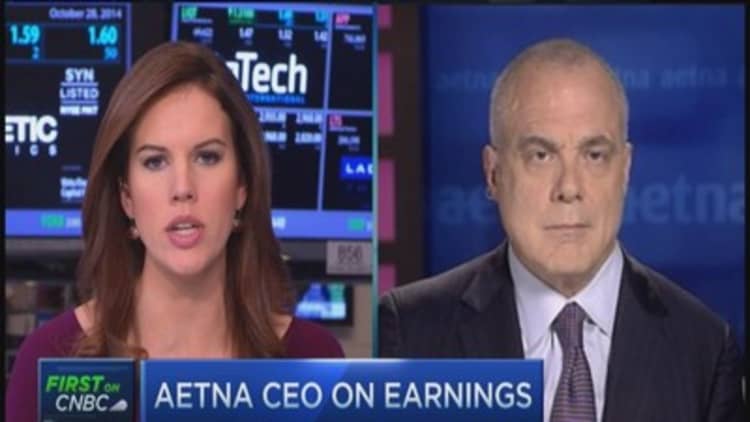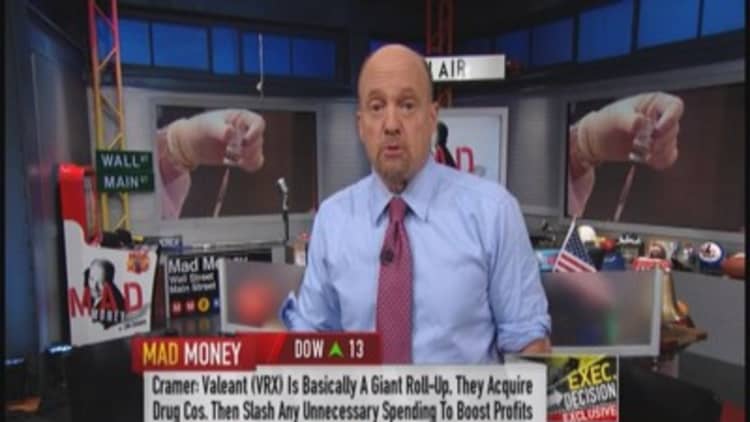
If you went to the doctor less or used fewer prescription drugs last year, but were surprised to learn that your health-care spending still went up, you're not alone.
Spending per enrollee in employer-sponsored health plans—in other words, most Americans—grew an average of 3.9 percent in 2013, despite the fact that people were using less medical services overall, a new report out Tuesday reveals.
The relatively moderate growth for health-care costs would have been more dramatic if people with employer-based insurance had used the same amount or even more such services than they did last year.
Read MorePfizer earnings beat expectations
In dollar terms, spending in 2013 grew an average of $183 to $4,864 per insured adult under age 65, according to the report by the Health Care Cost Institute.
The amounts include the cost borne by the employer-sponsored insurance plan as well as out-of-pocket payments borne by the insured adult.
The growing gap between prices and actual use was strikingly illustrated in the HCCI report by how much use of brand-name prescription drugs fell among employer-insured adults under age 65, compared to how the prices of those drugs grew.
In 2013, use of such brand-name drug prescriptions filled per day dropped 15.5 percent a compared to the prior year, HCCI found.
But the average price of brand-name drugs filled per day jumped more than 21.2 percent, leaving total spending overall on brand-name prescriptions up of 2.4 percent compared to 2013, the report found.
Read MoreThe race to fund a cure for Ebola
Likewise, a slight drop in acute in-patient admissions of 2.3 percent was more than offset by a 6.7 percent rise in overall in-patient spending, according to HCCI.
And a 6.4 percent bump up in prices for out-patient medical services significantly outpaced the very slight drop in the number of outpatient visits. This was also the first time in recent years that HCCI found a drop in outpatient visits.
Amanda Frost, a senior researcher at HCCI, said that in prior years when the group has done similar reports, "it's not unusual at all that we see spending driven by prices rather than use."
"What I think is interesting the amount of difference between those trends," which was greater in 2013, Frost said.
The amount of money employer-insured adults had to directly pay for their medical services, in the form of out-of-pocket costs such as co-pays, grew by 4 percent, from $769 to $800 in 2013.
However, there was "actually not much" change in the share of overall medical expenses that people directly pay.
"The share of health-care spending that was paid out-of-pocket was the same in 2013 as it was in 2012," 16.4 percent for both years, Frost said.

While average out-pocket costs grew for most people last year, women age 19 to 25 saw no difference in their average out-of-pocket medical costs, primarily as a result of Obamacare, according to HCCI.
The Affordable Care Act mandates that insurance plans cover the cost of contraceptives without co-payments from enrollees.
That was the main reason that young adult women's total average out-of-pocket costs didn't budge from $662 last year, even though their use of contraceptives grew by 4 percent, Frost said.
Read MoreSarepta timeline delayed on muscular dystrophy drug
"This is the first time we have seen flat out-of-pocket spending growth by any group of the privately insured," Frost said. "They paid more for some services, at the same time they spent less for contraceptives."
The HCCI report found that spending per broad categories of medical services remained in line with what was found in prior reports.
Acute in-patient admissions accounted for 20 percent of spending, out-patient care was responsible for 28 percent of expenditures, and 34 percent of the spending went to professional services. The remaining 17 percent went toward prescription medication.


